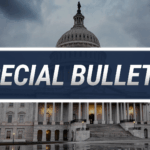
Analyzing Actionable Examples for Catheter-Directed Thrombolysis Success in 2025
Upper extremity coding is a sea of complexity that can easily sink coding accuracy if you are not prepared. Thrombolysis, in particular, poses a high

The distinction between laws and regulations is a fundamental aspect of governance in the United States, particularly in highly regulated sectors such as healthcare.
With the recent fall of the Chevron deference standard, which historically granted federal administrative agencies broad interpretive authority over ambiguous statutes, the balance of power between legislatures, agencies, and courts is poised to shift significantly. This article explores the differences between laws and regulations in healthcare, and examines how the change in the Chevron doctrine might affect their interpretation and implementation.
A law is a formal rule established by a legislative body, such as Congress at the federal level or state legislatures at the state level. Laws are enacted through a defined legislative process, which typically involves proposal, committee review, debate, voting, and executive approval or veto. In healthcare, major laws that shape policy and practice include the following:
Laws are typically broad frameworks that outline objectives and general principles, but leave the details of implementation to regulatory agencies.
Regulations are specific rules developed by administrative agencies to implement, enforce, and clarify the laws passed by legislatures. In healthcare, agencies such as the U.S. Department of Health and Human Services (HHS), the Centers for Medicare & Medicaid Services (CMS), and the FDA create and enforce regulations that give practical effect to statutory mandates.
For example:
Regulations undergo a rulemaking process that includes a period of public comment, analysis, and final adoption. These rules carry the force of law, but are subject to judicial review and potential legislative override.
The Chevron U.S.A., Inc. v. Natural Resources Defense Council (1984) decision established a doctrine that directed courts to defer to an agency’s interpretation of an ambiguous statute, provided that the interpretation was reasonable. This principle allowed agencies to exert significant influence over regulatory matters, especially in complex fields like healthcare.
With the fall of the Chevron standard, courts are now likely to exercise greater scrutiny over agency interpretations of statutes. This could have profound implications for healthcare, including:
The distinction between laws and regulations remains a cornerstone of the U.S. legal system. Laws provide the broad framework, while regulations fill in the details necessary for implementation. However, with the fall of the Chevron deference standard, the regulatory landscape in healthcare is set for significant transformation.
Courts will now wield greater authority in interpreting healthcare laws, potentially reshaping how regulations are developed and enforced. This shift underscores the need for legislative clarity and judicial consistency to ensure that healthcare policies remain effective and adaptable to the needs of patients and providers alike.
EDITOR’S NOTE:
The opinions expressed in this article are solely those of the author and do not necessarily represent the views or opinions of MedLearn Media. We provide a platform for diverse perspectives, but the content and opinions expressed herein are the author’s own. MedLearn Media does not endorse or guarantee the accuracy of the information presented. Readers are encouraged to critically evaluate the content and conduct their own research. Any actions taken based on this article are at the reader’s own discretion.

Upper extremity coding is a sea of complexity that can easily sink coding accuracy if you are not prepared. Thrombolysis, in particular, poses a high

When it comes to radiation oncology coding, the clinical treatment planning process isn’t just technical—it’s critical, with complex nuances that may spell trouble for coders
Please log in to your account to comment on this article.
Subscribe to receive our News, Insights, and Compliance Question of the Week articles delivered right to your inbox.




Subscribe to receive our News, Insights, and Compliance Question of the Week delivered right to your inbox.
Address: 5874 Blackshire Path, #13, Inver Grove Heights, MN 55076
Phone: (800) 252-1578
Email: support@medlearnmedia.com
Hours: 9am – 5pm CT
Prepare for the 2025 CMS IPPS Final Rule with ICD10monitor’s IPPSPalooza! Click HERE to learn more
Get 15% OFF on all educational webcasts at ICD10monitor with code JULYFOURTH24 until July 4, 2024—start learning today!
Unlock 50% off all 2024 edition books when you order by July 5! Use the coupon code CO5024 at checkout to claim this offer!
CYBER WEEK IS HERE! Don’t miss your chance to get 20% off now until Dec. 2 with code CYBER24